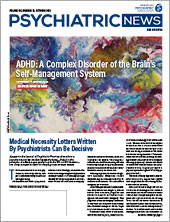U.S. Army soldiers who attempted suicide within 30 days of being diagnosed with suicidal ideation show several specific characteristics that may help identify such cases in the future and thus present opportunities for intervention, according to the most recent report from the Army Study to Assess Risk and Resilience in Servicemembers (Army STARRS).
Suicide and suicidality among U.S. military forces was a rising concern almost from the onset of the dual wars in Afghanistan and Iraq. The Army’s suicide rate surpassed that of American civilians in 2008 and reached its height in 2012, according to the report published in the October issue of the American Journal of Psychiatry.
“Importantly, this study considers the clinician’s point of view, namely, ‘What can help me identify risk of a suicide attempt in this patient I just diagnosed with suicidal ideation for the first time?’” said Robert Ursano, M.D., a principal Army STARRS investigator and a co-author of the present paper, in an interview. Ursano is a professor of psychiatry and neuroscience and director of the Center for the Study of Traumatic Stress at the Uniformed Services University (USU) in Bethesda, Md.
Prior reports from the long-term Army STARRS study of more than 1.66 million troops have examined suicidal behavior in light of sociodemographic factors, Army career factors, psychiatric diagnoses, physical health care use, and crime victimization or perpetration.
“The present research supports that predictors of risk of suicide attempt (or a completed suicide) in a population are different from the predictors of risk among those with suicidal ideation,” said Ursano. “The latter is important for advancing our ability to identify those at imminent risk.”
This most recent report examined administrative data covering 2006 to 2009 of 11,178 active-duty Army soldiers with documented suicidal ideation but no previous suicide attempts. Of that cohort, 830 (7%) later attempted suicide.
Overall, said the researchers, soldiers with suicidal ideation were mostly male, younger than 30 years old, White, high school educated, and never married, and they first entered the Army when they were younger than 21 years old, wrote lead author Holly Herberman Mash, Ph.D., a research associate professor of psychiatry at USU and the Henry M. Jackson Foundation for the Advancement of Military Medicine, and 13 colleagues. Most soldiers with ideation had at least one outpatient health care visit in the prior two months.
Of the 830 soldiers who eventually attempted suicide, 387 (46.3%) did so within 30 days of recorded ideation. The risk of attempt was highest just after diagnosis but declined as time passed. Adjustment and multivariate analysis revealed that most vulnerable soldiers were more likely to be women or were combat medics.
Attempts were also positively associated with sleep disorder diagnosed on the same day as ideation and anxiety disorder diagnosed prior to the day when ideation was diagnosed.
“Interestingly, a diagnosis of anxiety disorder on the same day as ideation, often considered as increasing risk, was associated with lower suicide attempt risk among this group with suicide ideation,” said Ursano. The researchers suggested that “may have led clinicians to a rapid intervention (e.g., psychiatric treatment and/or prescription of an anxiolytic), mitigating risk of attempt.”
Such new information on the progression from suicidal thoughts to action addresses an important question among both military and civilian populations, commented Christine Yu Moutier, M.D., a psychiatrist and chief medical officer at the American Foundation for Suicide Prevention, who was not involved in the Army STARRS research. “Sleep problems are hidden but herald indictors of potential suicide risk,” Moutier told Psychiatric News.
Elevated rates among the medics may be attributable to the demands of advanced training and the stresses of managing life-or-death situations, said the authors. However, those with higher rates may also be reflected in greater suicidal behavior among civilian health professionals or law enforcement personnel, whose professional cultures also often demand stoicism or “superhuman” effort on the job, said Moutier.
In another anomaly, the authors noted that Black soldiers were less likely to attempt suicide within the 30-day window, possibly reflecting “the protective role of cultural and family ties and spiritual/religion-based coping strategies,” according to Mash, et al.
The findings that Black soldiers were at lower risk of moving from ideation to attempts were in line with historic trends but should be viewed with caution, given that the study period ended in 2009, said Moutier. “More recently, there has been an increase in suicidal behavior and deaths among younger Black people, so suicidal risks are now more nearly equal.”
Overall, the report is a useful contribution to the science of suicide prevention on both clinical and community levels because it demonstrates that suicidal ideation and gestures reveal genuine risk that can be addressed by psychiatrists and other clinicians, said Moutier.
The Army STARRS research is ongoing, said Ursano. “Newly available Army data will allow us to address the more recent time frame. We would expect many or even most of the predictors to be stable, but that is an empirical question.” ■
“Predictors of Suicide Attempt Within 30 Days After First Medically Documented Suicidal Ideation in U.S. Army Soldiers” is posted
here.
